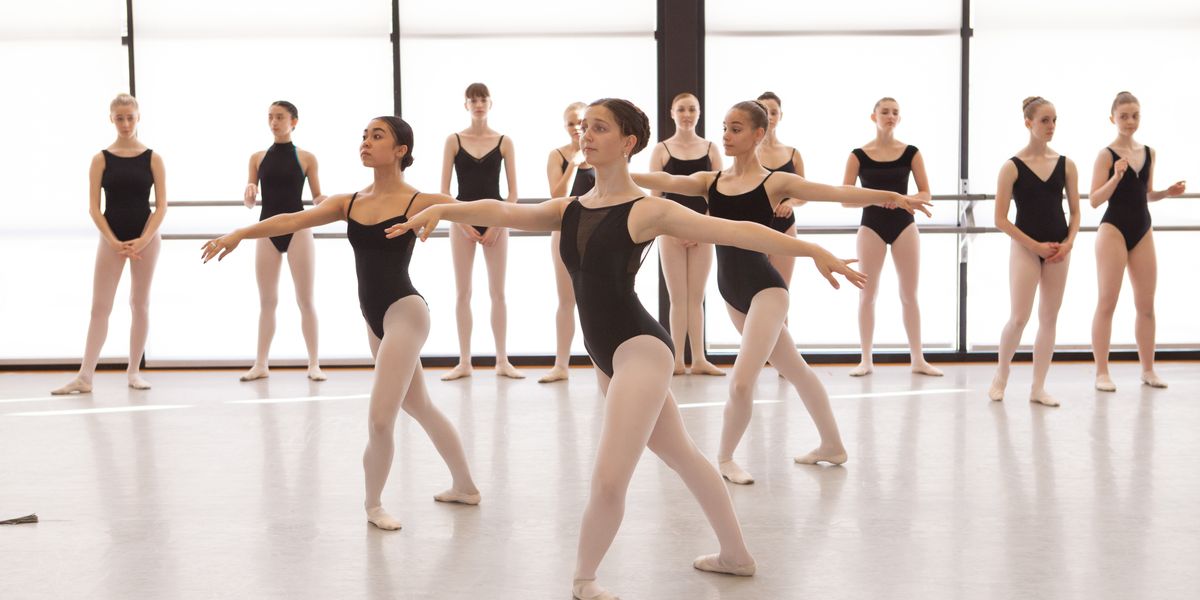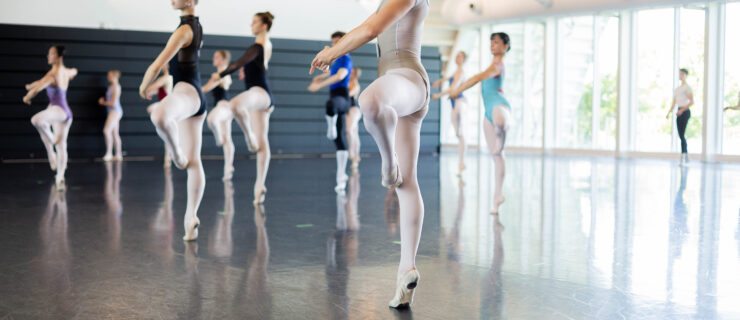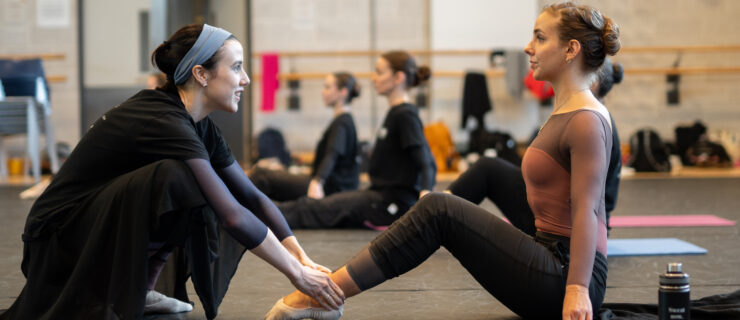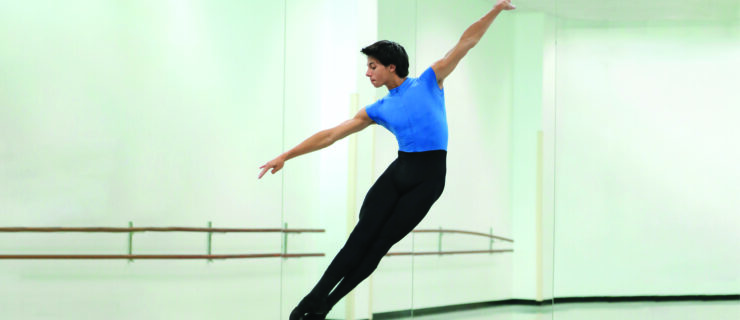Michelle Martin’s Tips to Master Pirouette en Dehors From Fourth Position Allongé
Michelle Martin, associate artistic director of Ballet Austin, says that pirouettes en dehors from fourth position allongé are full of “traps” for dancers. Whether you trained with a straight back leg or have never tried it before, Martin’s analytical breakdown will help you master this basic but dazzling turn.
Don’t exaggerate:
The size of your fourth position preparation, says Michelle Martin, “is based on your own proportions.” To find your perfect fourth, tendu arabesque with your tailbone down. As you bend the front knee, slide the back toes away from you; extend slightly beyond the tendu length while keeping the supporting hip over the supporting leg before placing the back heel down. “The goal is to go as deep as you can without your hips pulling off your supporting leg. If the tailbone is tipping back, that’s just one more thing you have to fix when you start the pirouette.”
 Michelle Martin with a Ballet Austin Academy student. Anne Marie Bloodgood, Courtesy Ballet Austin
Michelle Martin with a Ballet Austin Academy student. Anne Marie Bloodgood, Courtesy Ballet Austin
The back foot:
“A big struggle for dancers is figuring out where to get force when they’re not pushing off of two bent knees,” Martin says, adding that dancers tend to roll the back foot in. “If those back toes aren’t lengthening and pressing down into the floor—not with weight on them, but active—you miss a lot of energy potential.” Unrolling the back foot will also turn out the working thigh, putting it exactly where you want it for the outset of the pirouette.
Connect the arms to your back:
“Press down a little bit into the lats, so your arms are attached,” says Martin. She specifies that, even from the allongé preparation, she teaches her dancers to turn with arms in a classically round first position, where that connection is easier to feel. “It’s not wrong to cross the arms, but it’s more stylized.”
 Ballet Austin Academy students practice priouette en dehors. Annie Marie Bloodgood, Courtesy Ballet Austin
Ballet Austin Academy students practice priouette en dehors. Annie Marie Bloodgood, Courtesy Ballet Austin
Common mistakes:
Martin identifies several coordination failures that will slow down your pirouette from fourth allongé. “You only have an instant to get into a shape that can be turned. If the coordination is off, you’re absorbing force into your body instead of using it to go around.”
- Hopping onto pointe. “The supporting foot has to plant into the floor as you relevé, so there’s energy pushing down to anchor the pirouette. That resistance gives you momentum as you start to turn.”
- A turned-in passé. “Move your knee directly towards the back wall, instead of lifting up to the side and then trying to rotate from there.”
- Lifting the working hip. As the back toes push off, that action should propel you around rather than tipping that hip up.
- Leaving the arm behind. First, in your preparatory fourth, make sure your working-side shoulder doesn’t reach forward with the arm. Then, as you launch into the turn, “think of pulling that elbow back, right over the thigh of the retiré leg. Otherwise the back starts to turn, but the arm doesn’t come with it, and you’ve lost critical force.”
Tip: Once you’re familiar with a fourth position that makes sense for your body, go right to it, every time. Martin notices that many dancers take too big of a lunge coming out of tombé pas de bourrée. “They drag that back foot a little as they tombé into fourth, and then it never regains shape.” She adds that being consistent in your preparation is also helpful for partnering.





